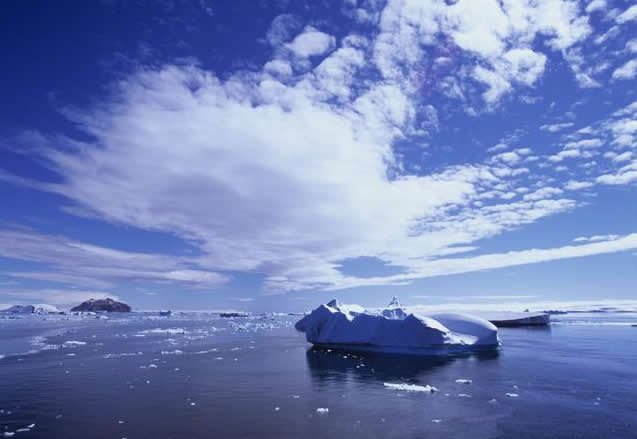Antarctica is the coldest region on earth and the only continent on earth without human settlement. In this untouched region, there are many strange natural phenomena, and today we are going to talk about one of them - the "Antarctic death icicle".
As early as the middle of the last century, it was claimed that in the antarctic ocean, a strange icicle sometimes appears, which looks beautiful but is actually deadly, why? Why? Because the icicles spread rapidly through the ocean, freezing any creature that does not get out of the way in time and killing them, hence the name "Antarctic death icicle".
01 'antarctic icicles of death' appear
Despite its long history, the 'antarctic icicle of death' had not been captured on film for more than half a century until 24 november 2011, when bbc photographers hugh miller and doug anderson used camera equipment set up under the antarctic sea ice to capture this natural wonder for the first time. Spectacle.

Of the shot, miller commented, "It was a race against time because we had no idea how fast it would grow."
As you can see, the 'antarctic ice column of death' they photographed is almost identical to the legend, with a beautiful looking icicle arising above the ocean and spreading rapidly downwards.

It should be noted that this image has been accelerated and that the process is actually much slower. Nevertheless, it is still deadly to the slow-moving sea creatures, who are frozen in their tracks, which means that the name "Death icicle" Is true to its name.
02 what is the "Antarctic ice column of death" All about?

Although the "Antarctic death ice column" May seem mysterious, it can be explained by simple physics.
The solubility of water for salts varies at different temperatures. Generally speaking, the lower the temperature of water, the lower its solubility for salts and vice versa, within a certain measurement range. Seawater has a large amount of dissolved salts (most of these are sodium chloride) which makes it taste salty (something that everyone on earth probably knows). Water does not always freeze at zero degrees celsius, but depending on the concentration of salt dissolved in the water, the freezing point of the water changes accordingly, in that the higher the concentration of salt in the water, the lower its freezing point. When low temperatures hit, the temperature of the upper layer of seawater is always the fastest to fall, and if the ambient temperature is low enough, the seawater here will start to freeze, and because the lowering of the temperature will cause the solubility of the water to the salts to decrease, some of the salts in this seawater will be precipitated out and spread to the surrounding seawater, which will cause the salt concentration in the surrounding seawater to increase.

In this way, although the temperature of the surrounding seawater is also low, their freezing point is lower and they do not freeze for the time being because of their relatively higher salt concentration, and the increased salt concentration means that the density of this seawater also becomes higher, so they sink downwards.
In the process of settling, this seawater will mix with the seawater below, with two consequences: The settling seawater will lower the temperature of the seawater below, and the seawater below will lower the salt concentration of the settling seawater.
Because both of these consequences have the ability to freeze the seawater, the mixed seawater may then also start to freeze, and if this does happen, then the process described above repeats itself, i.e. The salt is analysed and the surrounding seawater sinks downwards and then mixes with the seawater further down ......
We can see that under the right conditions this process can happen again and again, creating a 'growing icicle', the so-called 'antarctic dead ice column'.

This peculiar natural phenomenon is only found in the cold polar oceans (it can also occur in the arctic), so it is not a threat to us, and because the conditions for its formation are so harsh, it is rare even in the polar oceans, so it does not affect the creatures living in the polar oceans too much.


